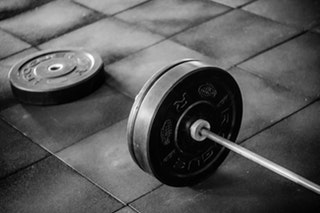
A barbell. Some plates. Lift. Rest. Add weight. Repeat. Grow.
Complicated?
Keep it simple
Before I started my own business, I worked at a commercial gym as a personal trainer. It was an awesome first job and I really learned a lot about program design, coaching, marketing and how to sell personal training as a product.
I remember my first client, a young girl, maybe 2-3 years older than me. Her goal was to gain some muscle and lose some fat. I was so nervous for our first training session together that I had trouble sleeping that night. I really wanted to impress her with my diet plan and exercise program. I wanted to bring my A game and I thought the only way to do that was by writing something new, over the top, a badass workout and a nutrition program that looked really cool on paper.
The gym owner, and my boss at the time, saw how nervous I was. He told me to calm down and asked me: “what’s the worst thing that can happen? She’s a beginner and she won’t need any fancy gimmicks and such to get results, just keep it simple.”
Keep it simple.
Till this day, this is one of the most valuable bits of advice someone has ever given me in the fitness industry.
The thing is, with all the available information out there it’s pretty hard to keep things simple. There are so many training methods and diets today that someone who has just started their fitness journey might not get the result that they want or deserve because of all the conflicting information. They have no idea where to start.
Some gurus might tell you that breakfast is a bad thing and the only way to make gains at the gym is by working out in the afternoon. Another guru might tell you to only eat protein and vegetables because carbs will kill you, and if you don’t train with barbells you won’t build any strength or muscle.
You get the point.
This is why I love the mentality; keep it simple, especially for beginners.
By mastering the basics of nutrition and training good things will happen.
Yes, higher volume programs are all the rage right now where you do more sets per exercise, and this may yield better results for hypertrophy and muscle protein synthesis over time compared to lower volume programs with fewer sets per exercise. But the thing is, if you are new to training, you don’t need high volume programs. You just need to get your ass to the gym a couple of times a week and be consistent. Say you did one set of bench press in the 6-12 rep range short of failure twice a week. That’s two sets of bench press divided over two workouts. After X amount of weeks, your chest, shoulders and triceps would be bigger and stronger, if you’re progressing in weight or using some other kind of progression scheme that is.
The same thing goes for nutrition. If you want to lose weight, you have to eat at a deficit, and if you want to gain weight, you have to eat more than you burn. How you go about doing this is a different story. If you are a beginner, choose a diet that suits your needs and go with that.
In the end, most diets don’t differ that much as long as you are in a calorie deficit if weight loss is the goal.
So, to give you some tools to work with as a beginner I would say: choose one or two compound movements for each major muscle group. For example: bench press and incline bench press for chest, overhead press and seated shoulder press for shoulders, squats and leg press for quads, RDL and glute ham raise for hamstrings and lower back and chins and barbell rows for the back. If you want, you can add some kind of curl, calf and ab-movement for some isolation work. I would also suggest that you do some kind of rear and lateral delt exercise for full shoulder development. Train the whole body 2-3 times per week. Start with two and gradually build up to three times per week. Do 1-3 sets per exercise with a repetition range of 6-12. Start with one set per exercise and gradually build up to three from there.
It could look something like this:
Workout A
A1) squats
A2) Chins
B1) Bench Press
B2) glute hame raise
C1) Face pulls
C2) Tricep push down
C3) Calf raise
Workout B
A1) RDL
A2) Incline Bench press
B1) Leg press
B2) Barbell row
C1) Lateral raises
C2) BB curl
C3) Hanging leg raises
Just alternate between the two workouts and gradually build up to a higher volume and frequency. It’s not fancy, it’s not new or something that looks cool or badass on paper, but it works. Trust me.
Then, what about nutrition. As I stated above- choose a way of eating that suits you as a person and your lifestyle. The best diet is after all the one that you can stick to. Eat lots of fruits, vegetables, good sources of protein, fats and carbs. Eat as much whole food as possible, and if you can, keep processed foods to a minimal.
Keep it simple my friends. Learn and master the basics and the results will be awesome. I guarantee it. For a more personalized nutrition and exercise plan that will take your physique to a new level; check out our online coaching program.
//Cheers Daniel Rimfjäll (and Erik Lavesson contributed a little too, as he likes to point out).
© Copyright Fit and Lean
